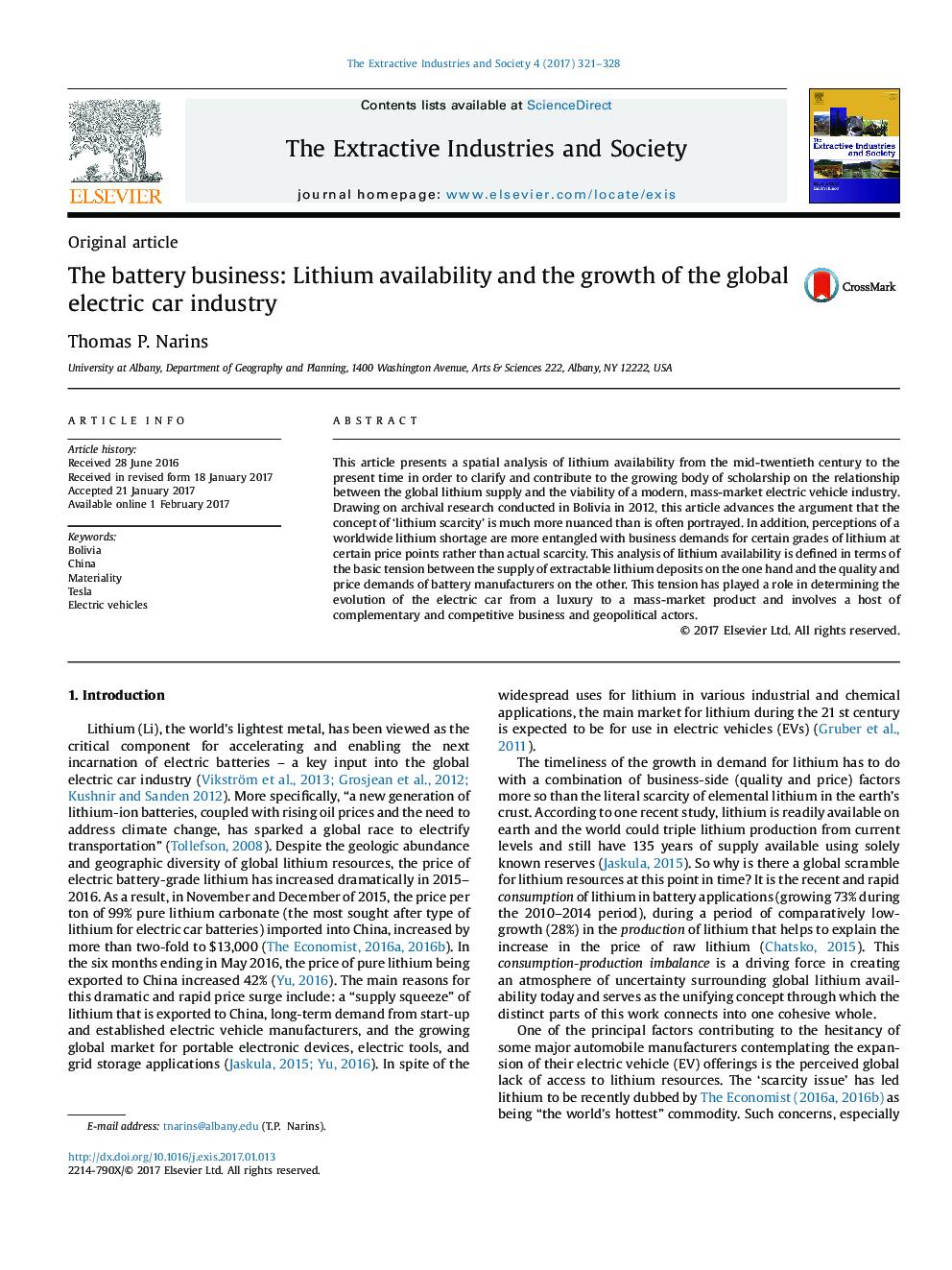| Article ID | Journal | Published Year | Pages | File Type |
|---|---|---|---|---|
| 5114399 | The Extractive Industries and Society | 2017 | 8 Pages |
Abstract
This article presents a spatial analysis of lithium availability from the mid-twentieth century to the present time in order to clarify and contribute to the growing body of scholarship on the relationship between the global lithium supply and the viability of a modern, mass-market electric vehicle industry. Drawing on archival research conducted in Bolivia in 2012, this article advances the argument that the concept of 'lithium scarcity' is much more nuanced than is often portrayed. In addition, perceptions of a worldwide lithium shortage are more entangled with business demands for certain grades of lithium at certain price points rather than actual scarcity. This analysis of lithium availability is defined in terms of the basic tension between the supply of extractable lithium deposits on the one hand and the quality and price demands of battery manufacturers on the other. This tension has played a role in determining the evolution of the electric car from a luxury to a mass-market product and involves a host of complementary and competitive business and geopolitical actors.
Related Topics
Life Sciences
Environmental Science
Management, Monitoring, Policy and Law
Authors
Thomas P. Narins,
